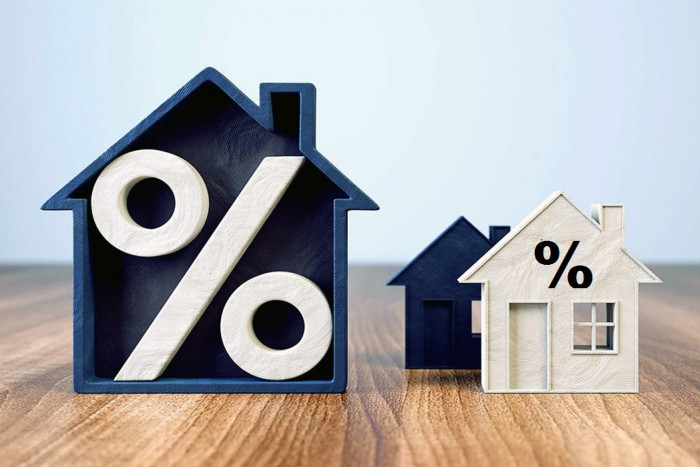Hello!
Digital marketing, as a field, is always changing. You have new trends to chase, new channels that emerge, and other factors that always challenge marketers to stay ahead of the curve.
One key vertical for marketers, specifically B2B and SaaS or technology marketers, isn’t new at all, but is rather years if not decades old.
However, it’s only recently that it’s been given a name and its importance has started to truly be understood in the age of digital marketing.
Of course, we’re talking about “dark social.”
But what is dark social? Is it some weird secret society of people in capes and hoods talking to each other? (No, of course not.)
 In this blog, we’ll shed light on the following points:
In this blog, we’ll shed light on the following points:
- What “dark social” means
- Examples of dark social, especially in marketing
- The role of dark social in demand generation
- The challenges of tracking dark social – and how to overcome them
- The best sorts of content you can create to harness dark social
What Is Dark Social?
 Do you know how astrophysicists believe that the vast majority of the universe is composed of so-called “dark matter,” which isn’t visible to our instruments but is a vital component of ensuring everything stays together?
Do you know how astrophysicists believe that the vast majority of the universe is composed of so-called “dark matter,” which isn’t visible to our instruments but is a vital component of ensuring everything stays together?
Dark social is like that. “Dark social” refers to the overwhelming majority of chatter and information shared on the internet, which isn’t public on X (Twitter) or Facebook, but rather occurs behind closed doors – on internal Slack threads, in email exchanges or direct messages.
A not-insignificant part of dark social isn’t even online at all; “dark social” could refer to a conversation had at a trade show or around the water cooler.
 Because this dark social happens largely in private, two things are true:
Because this dark social happens largely in private, two things are true:
- First, it can be very challenging for marketers to track and correctly attribute leads or conversions to (more on this later)
- Second, it’s one of the most critical and effective channels at building interest and trust in your brand, especially for a B2B offering
Think about it. Which do you think is the more effective way of driving interest in a brand – stumbling across a blog post or having a trusted coworker and friend tell you that they’ve found something that’s interesting and relevant to your business?
(That’s not to say that blog posts don’t have a place in marketing; they do – but we’ll get to that later.)
Dark social is one of the most common ways that people share information with each other, and has been since the birth of the internet with the earliest instant-messaging tools.
What Are Some Examples of Dark Social?
 The following are all examples of dark social, specifically in a B2B setting.
The following are all examples of dark social, specifically in a B2B setting.
- Andrew the accountant sends Maureen the manager, his boss, a message on their internal Slack channel and lets her know about a piece of software he’d heard some colleagues discussing in a local group for professionals that he thinks could really improve his productivity
- Colin the CIO recognizes that his department is falling behind on their future growth initiatives due to most of their work being putting out fires and solving technical support tickets. He emails Tim and Tina the techs and asks them if they know any reputable help desk outsourcing companies in the area.
- Victor the VP runs into Patricia the president while he’s making himself a coffee. He remarks that he’d heard about a great potential solution for one of their budgetary issues on a podcast he was listening to while driving into work.
 Dark social can refer to information disseminated across numerous types of platforms:
Dark social can refer to information disseminated across numerous types of platforms:
- Internal/private messaging on group chats like Discord and Slack
- Individual messaging apps like WhatsApp or Facebook Messenger
- Links shared – but by others, not by you – on discussion forums like Reddit
- In-person meetups at trade shows or around the office
- Individual emails or other direct messages
As you can see, “dark social” isn’t anything new or nefarious; it’s simply another way to phrase – and think about – the normal interactions that coworkers and industry colleagues have all the time during the work day.
A link shared over email, a WhatsApp message sharing an interesting podcast or video, an offhand comment during a shared commute – these are all different examples of dark social. Essentially, you can think of dark social as “word of mouth” marketing, but updated for the digital age.
Why Is Dark Social Important for B2B Marketing?
 There are a number of reasons why dark social is a critical tool in the belt for B2B marketers, but at the end of the day, they mostly boil down to one word:
There are a number of reasons why dark social is a critical tool in the belt for B2B marketers, but at the end of the day, they mostly boil down to one word:
Trust.
We live in a world where we are constantly bombarded with messages that are designed to sell us things. Ads, videos, billboards, emails, you name it. It can get overwhelming!
And, let’s not mistake things, many of these products and services that are being advertised may in fact, genuinely be worth it. (If I, dear reader, were against the entire concept of advertising, we would be in the wrong business).
But the problem is that it can be difficult to know which of these things are worth your time, and which aren’t worth a second glance.
For that matter, it can sometimes be difficult to know if you even need a thing that’s being advertised to you. Let’s say you saw an ad promoting the best winged deflangilizer on the market.
 Do you need that thing? What is it, and why does it matter that it’s winged? What do you need to deflangilize?
Do you need that thing? What is it, and why does it matter that it’s winged? What do you need to deflangilize?
Now, imagine that you log on to your business Slack in the morning and a trusted coworker lets you know that in the normal course of their internet browsing she came across videos explaining why businesses like yours need a great winged deflangilizer provider – and she’s already identified some top prospects.
Which of those two interactions do you think is more effective at getting our deflangilizer maker new business?
That’s just one example of how dark social can be critical to B2B marketing. (Of course, replace the nonsense “winged deflangilizer” with whatever your own product or service of choice; if anyone does invent a winged deflangilizer, however, I would like royalties.)
Dark Social and Demand Generation Marketing = A Match Made in Heaven
It’s said that demand capture marketing – traditional “lead generation” – can get you maybe up to 5% of your existing audience. But you want a lot more than 5%, don’t you?
The problem with this is that that vast 95% of your remaining potential customers might not even know that your business exists, or that your offering can help you at all. Again, let’s call this the winged deflangilizer problem.
Maybe our product can really be a difference-maker for your business – but do you know that they exist? Do you even know you have a problem that they solve?
Getting people aware not just of your brand and its solutions but of the myriad problems that you could be fixing is how demand generation works. This is how you turn 5% into 50% into 100%.
 Dark social is an excellent way to harness the power of demand generation marketing for exactly this reason.
Dark social is an excellent way to harness the power of demand generation marketing for exactly this reason.
If you can reach a small percentage of professionals with your demand-gen efforts – say, through podcasts or videos on social media channels – then those professionals will be more likely to, in turn, mention your offering to their colleagues and coworkers.
Through demand generation marketing you reach out to individuals who then, in turn, share the information over dark social with people and key decision makers who trust them. This is how you can really accelerate your business’ growth from quick to “lightspeed.”
How to Measure Dark Social
So, here’s the problem for data-oriented marketers and sales types: Dark social is, by its definition, difficult to measure and track.
 If you post a video to Facebook and someone clicks on it, you can track them via the code.
If you post a video to Facebook and someone clicks on it, you can track them via the code.
But what happens if someone takes that video and sends it over email without the tracking attribution? Or shares it in their local Slack? Or doesn’t share the video, but tells their boss they should check out wingeddeflangilizers.com?
By its nature, dark social is hard to track – but that doesn’t mean it’s impossible. Here are some of the ways you can track and measure dark social campaigns:
Ask Them
Seems too simple to be true, right? It isn’t! A straightforward “how did you hear about us” question on conversion forms – optional, of course, lest you provide too much of a barrier to signups – can give you a world of information.
Maybe they came across a post on Facebook, or heard you on a podcast, or saw your TikTok videos. Or, maybe, they heard about you from a friend or industry colleague. It’s remarkable the amount of information you can get from people just by asking!
Track Brand Searches
Good marketing teams track how many organic searches your brand generates. If our team suddenly sees “wingeddeflangilizers.com” with a sustained uptick in searches after our outreach began, that’s a good indication that this is a result of dark social discussions.
GA4 Attribution
 Google Analytics 4 is a powerful suite of tools for any marketer, B2B or B2C. Its “Attribution” section lets you see all of the various interactions and touchpoints a conversion had with your brand before they pulled the trigger.
Google Analytics 4 is a powerful suite of tools for any marketer, B2B or B2C. Its “Attribution” section lets you see all of the various interactions and touchpoints a conversion had with your brand before they pulled the trigger.
You can filter these touchpoints by campaign, and if you’re seeing more hits within a single campaign than outside of it – that could be a strong indicator that your dark social campaign is working.
Tracking Google Conversions on Facebook
Thankfully for us as digital marketers, Facebook/Meta’s tracking pixel is quite a potent bit of analytics magic, and you can use it to track how many of your ads result in the viewer going to Google within a short period of time (typically no more than a couple of days).
It’s a little complicated to set up, but there are plenty of helpful guides online.
These are just some of the ways you can measure the impact of your B2B dark social marketing campaigns. After all, we’re data-driven marketers; we need data to know what’s working and what isn’t!
What Sort of Content Is Best for Dark Social?
 To really harness the power of dark social marketing, you should focus on creating content that fits two criteria:
To really harness the power of dark social marketing, you should focus on creating content that fits two criteria:
- Informative. Platitudes and marketing-speak can only take you so far. Whatever your offering, you need to explain in straightforward terms why A, it can help a business, and B, why your business provides the best type of your product or service around.
- Shareable. And yet, you can’t get too into the weeds, so to speak. Whether it’s an interview on a podcast or a TikTok video, you need to make sure that your bite-size informational chunks are easily digestible and shareable in the speed of the modern digital age.
For this reason, videos – especially short-form videos like those found on TikTok, Instagram Reels, and YouTube shorts – are great at getting your brand name out there using dark social.
Podcasts, as previously mentioned, are also excellent ways to produce informative content in a sharable manner. Even if these aren’t as bite-sized as short-form videos, the sort of people who consume podcasts intend to do so in a deliberate, time-consuming matter, so the audience is already primed to learn quite a bit about your business.
Also read:
- Growth Hacker Jobs are Popping up Everywhere. What’s the Growth Hacker Job Description?
- How Firms Successfully Resume Business Operations
- Test Drive Quasa Connect.
Conclusions
 Dark social, to be frank, is simply a new way to conceive of and talk about a phenomenon we’ve known about for decades: How people discuss brands and solutions and products behind-the-scenes.
Dark social, to be frank, is simply a new way to conceive of and talk about a phenomenon we’ve known about for decades: How people discuss brands and solutions and products behind-the-scenes.
Just because these conversations are happening more often at the “digital water cooler” instead of the physical water cooler (though sometimes there, too) doesn’t make them any less real – or any less important for marketers, specifically in a demand-generation context.
If you want to truly grow your business beyond the 5% of your prospects who are coming to you via lead generation, that means harnessing the potential of dark social. If you want to talk with a marketing agency that can do just that, give SevenAtoms a call today.
Thank you!
Join us on social media!
See you!






